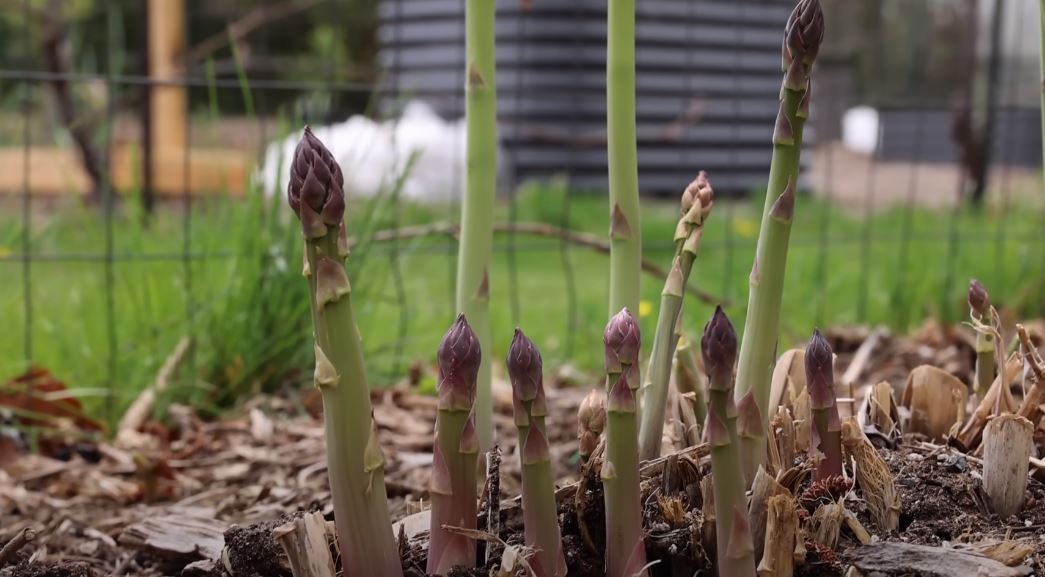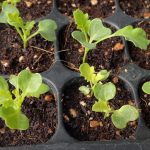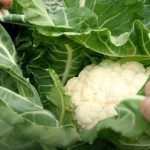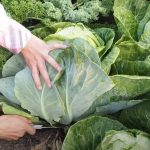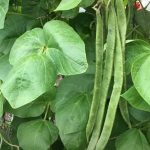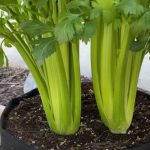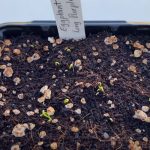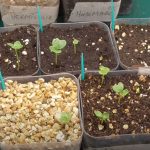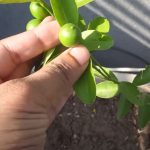Asparagus is a perennial plant that produces around 10 spears each harvesting season. This vegetable is frost-hardy and is relatively easy to care for. Besides, who wouldn’t want to enjoy their own batches of delicious roasted asparagus? Learn all the steps of growing asparagus – from seed to harvest here!
Overview
Level of difficulty: Intermediate, asparagus requires patience to grow and care for,
Nutrition: Asparagus is low in calories and contains various nutritious components like vitamins B1, B2, B3, B5, B6, B9, C, E, dietary fiber, and iron. Eating asparagus has numerous health benefits, like improving the digestive system, helping with weight loss, and lowering blood pressure.

Of course, excessive consumption of asparagus isn’t recommended either, as it contains quite a lot of fiber. Despite its common benefits, like promoting bowel movement and lowering cholesterol levels, fibers can cause diarrhea and bloating if consumed in large amounts in one go. Keep the asparagus diet lower than 5 per day, and you will profit greatly from the vegetable!
Height: A mature asparagus plant grows around 4 feet tall.
Time to develop spears: Asparagus produces spears in the first 2 to 3 years of its life, but the yield hasn’t reached its optimum potential yet. The plants will fully mature from the third year onward and produce more spears.
Lifespan: Asparagus is a perennial plant that can continue producing spears for up to 25 years if grown in open gardens with space to crawl and grow freely. In pots, asparagus grow up to 5-6 years. Therefore, I highly suggest planting this vegetable on garden beds or open garden soil.
Tips For Choosing Asparagus Cultivars
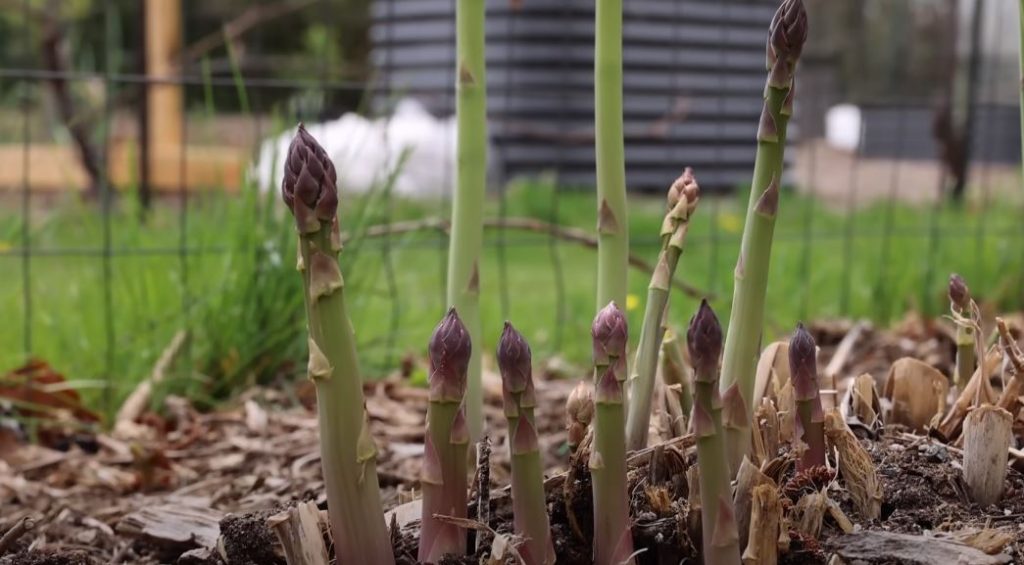
Yes! There are various types of asparagus cultivars to choose from:
- Green asparagus: Famous asparagus type, you can expect perfect crunchiness and light green color after cooking.
- Purple asparagus: Sweeter and more tender than green asparagus, this variety has a distinctive mixed green-purple color and will add a pretty color to your plates.
- Jersey giant asparagus: From its name, you can tell that the size is massive. If you want bountiful yield and impressive consumable spears, this is the hybrid you should pick.
- White asparagus: I bet you have seen pickled asparaguses before, and I also bet that most of them have white color. This hybrid gives a tougher texture with a good crunch. This variety has a different harvesting style as the spears are grown deeper underground with only a short portion poking out of the soil.
Preparation
Tools
- Pruning shear
- Cell flats
- Garden soil mix with sandy and loamy texture
- Balanced fertilizer (10-10-10 or 15-15-15) or well-rotted manure
Containers
- Pots with at least 10-inch mouths if you want to plant in pots
- Raised garden beds or open garden beds if you want to grow asparagus outdoors
Growing Asparagus – From Seed To Harvest Step By Step
What are the steps of growing asparagus from seeds? Check out my complete instruction and extra tips on how to make the most out of your asparagus crops.
Germination
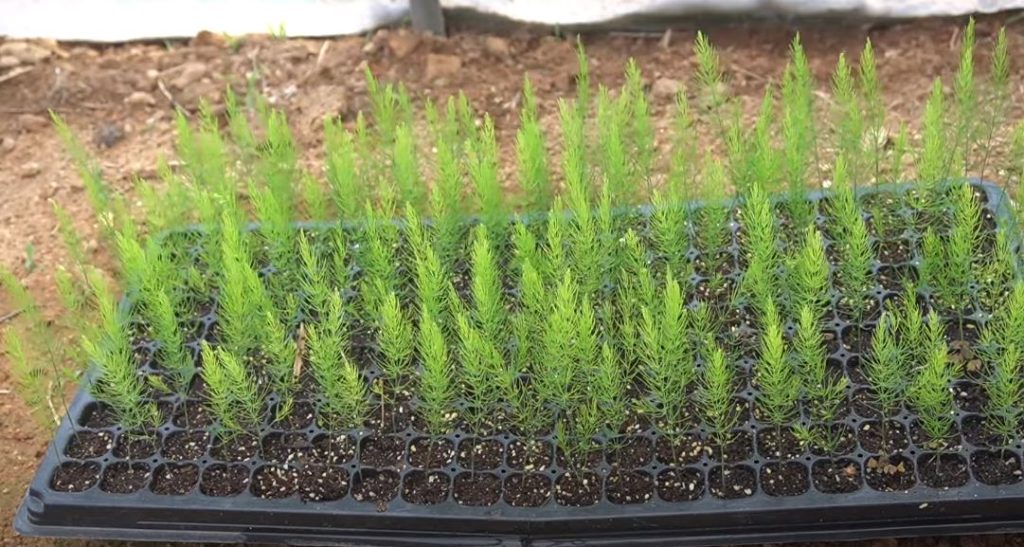
When germinating seeds, I always do it indoors so I have better control over the germination rate and the seeds’ condition. Follow these steps:
Step 1: Prepare the cell flats with a garden soil mix with a well-drained texture.
Step 2: Create shallow holes in the middle of each cell that isn’t deeper than 1 inch.
Step 3: Sow each asparagus seed in each cell flat and cover the holes with soil.
Step 4: Water the seeds until the soil is moist to the touch. The first inch should be wet to the touch, but it shouldn’t be damp. Then, place the cell flats near a natural light source.
Step 5: Keep up with the watering once or twice a week. Just ensure the soil dries out very lightly between sessions, and don’t overwater. Asparagus seeds take 3 to 6 weeks to germinate, which is quite long for a vegetable type like this.
Seedling and transplanting
After 3 to 6 weeks, young asparagus seedlings emerge from the ground. Give the seedlings another few weeks until the sprouts grow taller than 2-3 inches before repotting.
Step 1: Move the entire seedlings to an open garden bed or a pot, but I suggest an open garden bed. Each asparagus plant needs at least a 10-inch wide soil patch to grow in, and each plant should be 12-18 inches apart.
Step 2: Create a deeper hole to plant the new seedlings in. The holes should be 2-3 inches deep. Move the seedlings to their new home.
Step 3: Keep up with the watering schedule, and don’t add fertilizer to avoid burning the fragile roots.
Adult plant
An asparagus plant doesn’t fully mature in its first year. But you should start fertilizing with NPK-rich fertilizer to promote foliage, root, and branch growth. Keep the garden soil free from weeds, and don’t plant any other companions with this crop. Once every 7 to 14 days, fertilize the crops so that the plants have a more developed root system and foliage.
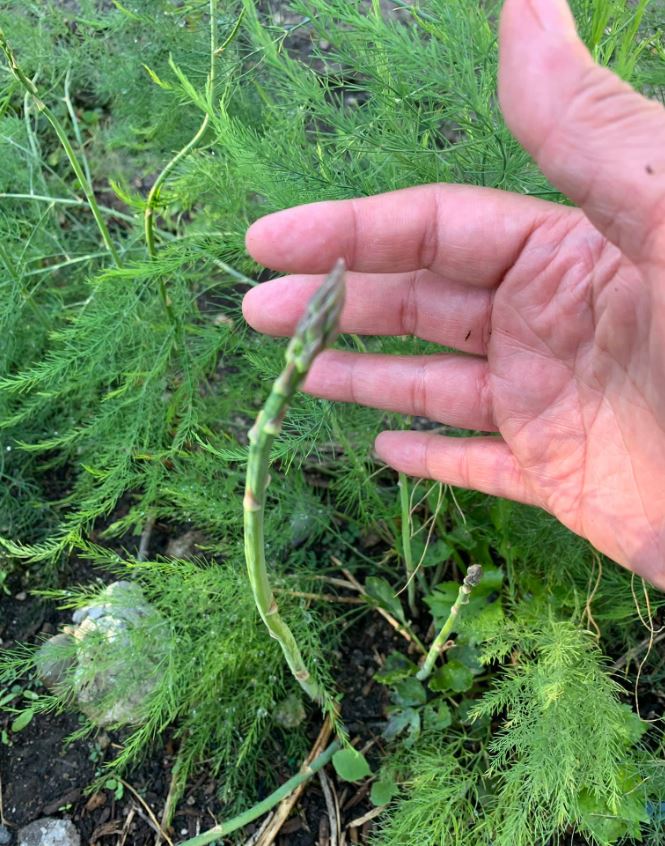
Pollination
This species is pollinated by bees. These cute fellas transfer pollen from a male flower from a male asparagus plant to the stigmas of female flowers on female plants. That’s why it’s more advisable to grow various asparagus trees simultaneously to ensure that the bees have material to work with.
Harvest
Asparaguses are ready to be harvested from spring until early summer. It’s not recommended to keep harvesting the new spears as the plants need a period to regrow the stems and secure a bountiful yield in the next harvesting season. Keeping up with the harvesting whenever a spear grows will overexert the plants!
In the second year, the harvest season lasts 3 weeks. And in the third year, the harvest season lasts 6 to 8 weeks without pushing longer. From the fourth year, you can expect 8 weeks of harvest.
When asparagus spears reach 6 to 10 inches in height, and the tops still remain tight, it’s time for harvesting. Use a pruning shear or a sharp knife and nestle the blade an inch or ½ inch under the soil where the spears grow. Cut them neatly and quickly without damaging the major fern.
Important: Avoid harvesting in the first 2 years because the main stems are still weak. Breaking the young asparagus spears may damage the main stems and cause stunted root growth.
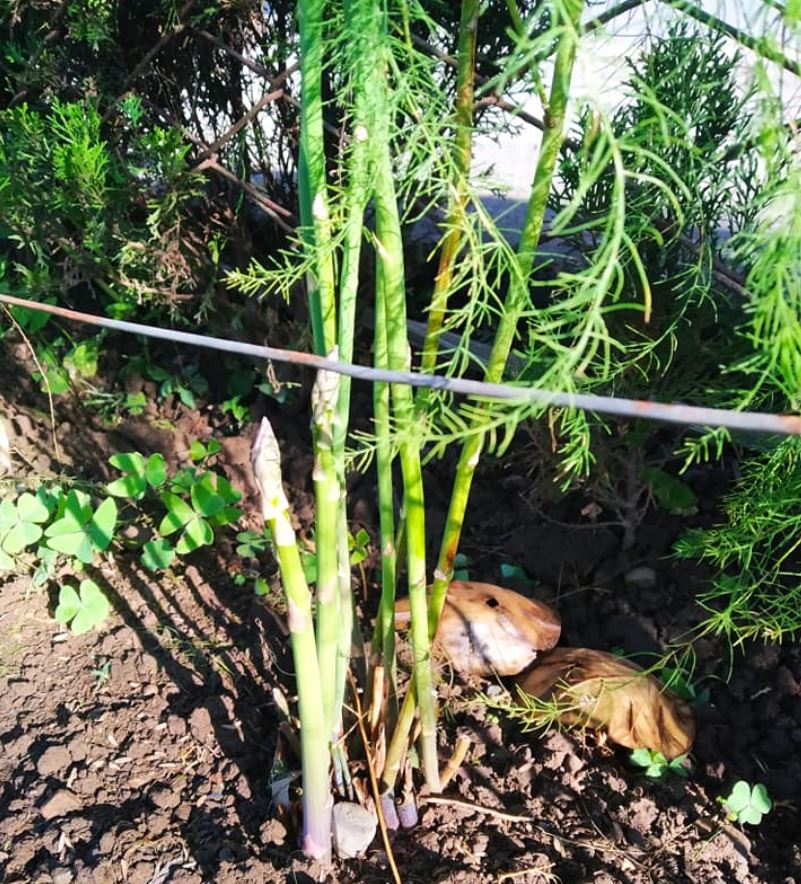
How To Care For Your Asparagus Garden
It’s very important to provide meticulous care for your asparagus crops during the first 2-3 years of their life. If you follow the guide below, you should be able to harvest bountiful crops from the second or third year!
Light
Asparagus favors a full-sun diet, so planting them where there is no shade from other tall greens is favorable. The vegetable needs at least 8 hours of sun daily, so growing it in an open garden is more convenient. That way, you won’t have to move asparagus pots in or out of their places indoors.
It’s also not practical to use artificial lamp light either because we are dealing with a perennial type. I don’t recommend growing them in pots under this equipment for 3-5 years to come, simply because it’s not convenient, and the plants’ 4-feet height will require too much effort to provide an illumination system potent enough.
Temperature
This vegetable thrives best in a warm climate with little to no temperature fluctuation. At day, the temperature should run between 75 and 85oF. At night, the temperature shouldn’t go lower than 60-65oF.
What happens if the temperature goes higher or lower? When the climate gets too hot (over 85oF), it slows down root and shoot propagation. When it gets lower than 20oF, asparagus will contract diseases easier, and the spears or shoots will be damaged.
Yes, asparagus is frost-tolerant, but it can’t survive in such cold weather. The lowest point it can survive is 35-40oF. Even then, the plants won’t survive long.
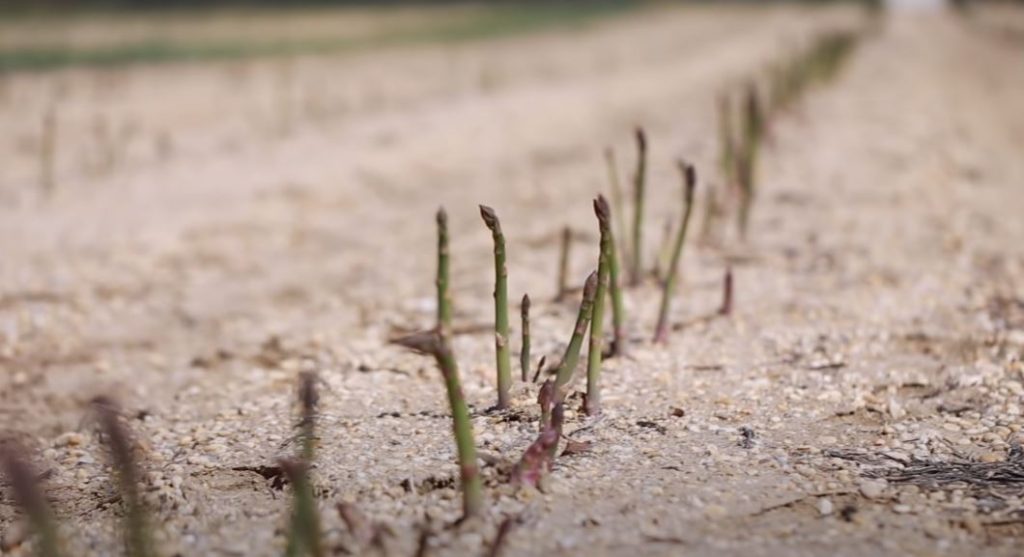
During the hottest or coldest months, you must mulch your asparagus plants with straws, compost, or well-rotted manure to keep the heat or frost from penetrating too deep into the soil. Mulching also cuts down weed propagation, so there is no reason not to do it.
Watering
During the first 2 years of its young life, asparagus needs 1 to 2 inches of water per week. This means for every 1-square-foot patch of soil, you need to use 0.62 to 1.24 gallons of water weekly. So, the irrigation requirement is quite standard during this time.
From the third year, gardeners can start spacing out the watering time from once or twice per week to once every 10 days or 2 weeks.
Drip irrigation is recommended as the stalks of asparagus plants are small, and the spears rot and attract fungi easier due to water retained on the leaves and stem.
Oxygen
Every tree needs access to oxygen to promote growth. Oxygen is a major component in aerobic respiration that process food molecules to turn them into energy. The same energy is used to promote trees’ growth. And the same goes for asparagus.
That is why it’s recommended to use a well-drained type of soil with a loamy and sandy mix that doesn’t get compact easily and has decent water retention.
Diseases
Some diseases that asparagus plants manifest are:
- Purple spots
- Misshapen spears
- Fusarium wilt
- Crown and root rot
- Cercospora blight
While some of them are caused by fungi, all can be avoided by proper irrigation and controlled exposure to temperature. Of course, it doesn’t harm to engage in preventative methods, and fungicide is the most effective choice.
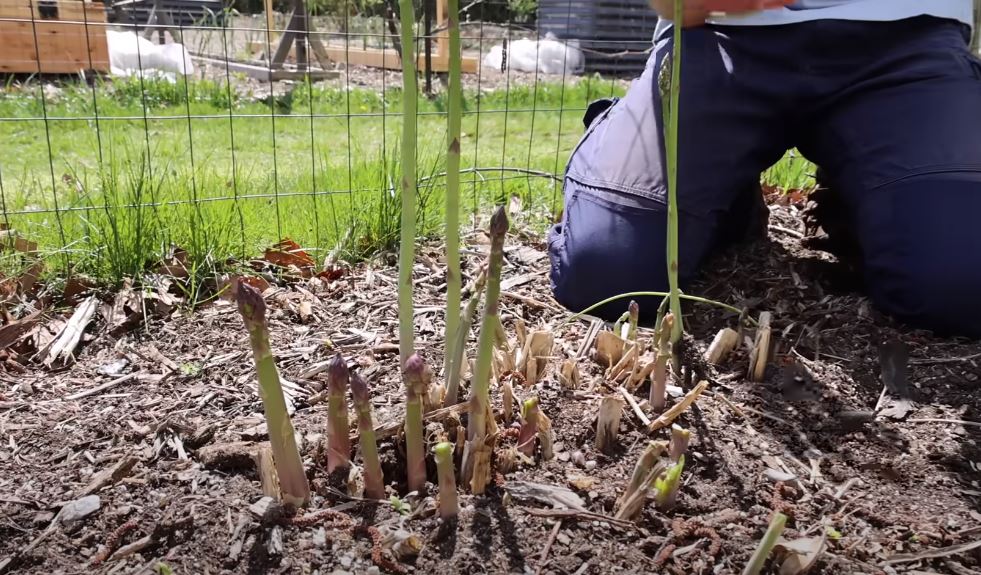
Starting with fungicides during the seedling period isn’t necessary. Still, if the plants have shown signs of infection, it’s wise to implement the products early to make sure that the yield and a healthy development aren’t impacted.
Apply fungicide once every 7 to 14 days to keep the plants healthy according to the recommended ratio of each fungicide. For asparagus, use mancozeb, chlorothalonil, or tebuconazole-based solutions.
Fertilizer
In case you want to employ more natural products, use well-rotted manure to add nutrients to your asparagus crops. Regarding commercial fertilizers, choose a balanced NPK ratio of 10-10-10 or 15-15-15. It’s best to fertilize in early spring to give the young shoots a boost of nutrients to grow into taller and larger spears.
How to prune asparagus plants
After each harvest season, we have to cut asparagus plants close to the soil to prepare them for the next growing season.
Wait until all the leaves and branches turn yellow or brown. This is the best time to prune the plants. And use a pruning shear to cut the stems and leaves close to ground level.
When should we start pruning asparagus? During the first 2 years, I don’t recommend harvesting the spears or pruning the ferns because we need them to thrive as tall and as strong as possible to provide vitamins, and carbon hydrates, among other components, to the roots.
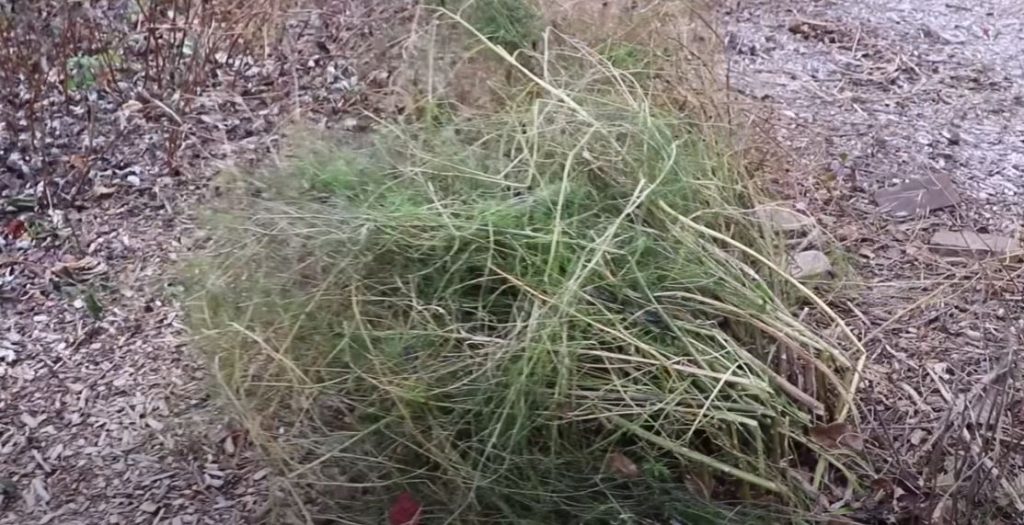
FAQs
How much asparagus do you get from one seed?
It depends on the year and the care that the plant has received. An established asparagus plant will offer 10 to 25 spears each season.
Does asparagus need winter?
Asparagus prefers a warmer climate and doesn’t need a vernalization period to produce spears. With that said, this species is very hardy and needs little preparation to survive. Mulching the top soil will be enough to insulate the soil and root system from the cold fronts.
How fast does asparagus grow from seed?
Growing asparagus from seeds will take a very long time, from 3 to 4 years, to reach the first harvest. If you grow asparagus from crowns, the process will be much speedier, and you can harvest right in the first year. Spears will start appearing after 3 to 6 weeks.
